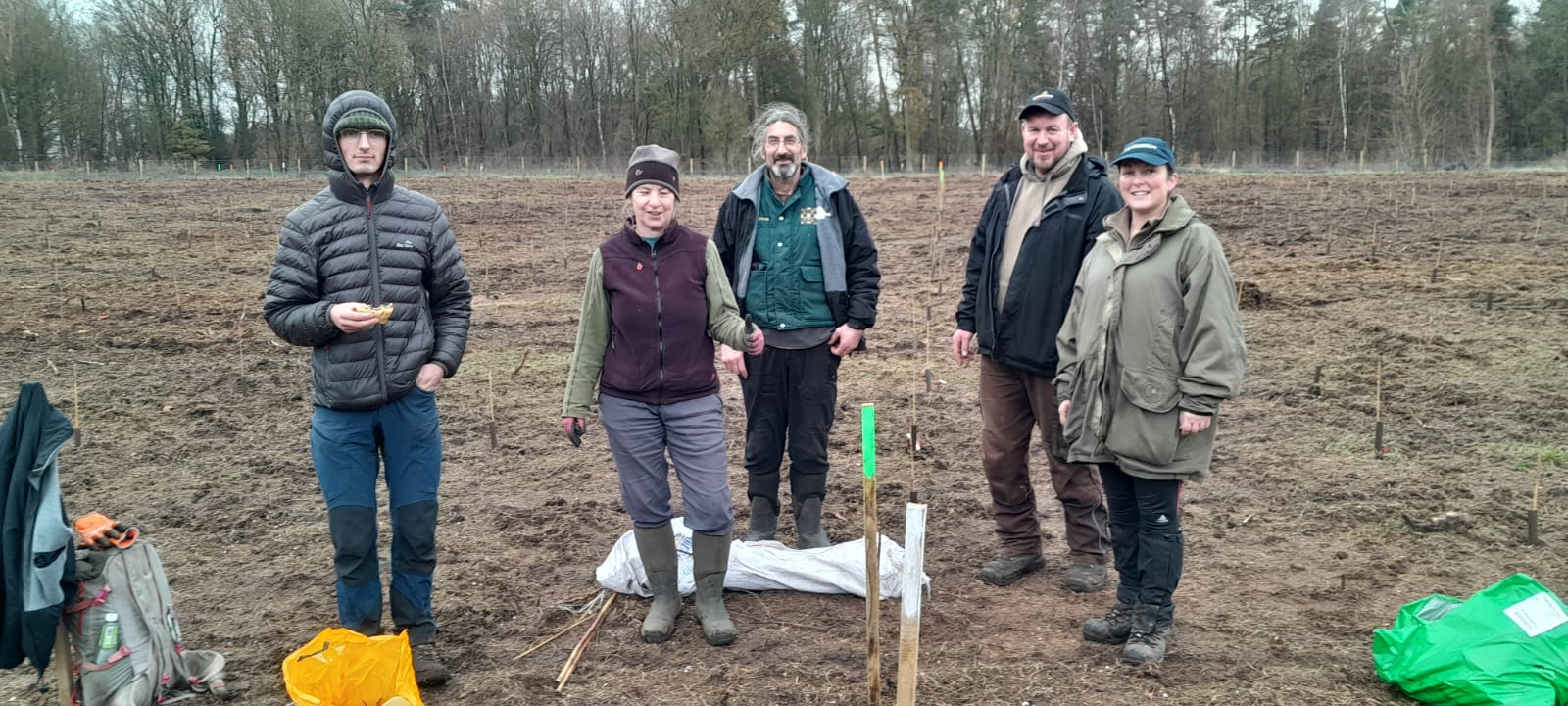My time working as this year’s Patsy Wood Scholar so far has been really enjoyable. I’ve learned a lot during this winter season and met many interesting situations and challenges that will no doubt be invaluable in my future forestry career. Being from the Scottish Highlands, I didn’t have much experience working in a broadleaf forestry context – so my tree ID has vastly improved, as has my appreciation for lowland silviculture and tree establishment.
During the winter season we planted two ‘Supersizing Broadleaves’ trials – planting birch, oak and sycamore of various provenances and stock types, along with carrying out beat-up work on birch and sycamore progeny trials throughout the North of England and Scotland. This has given me some insight into the function and potential of tree breeding programs, and different approaches to tree establishment. Though the results of these trials are yet to be obtained, it has been interesting seeing the different stock types planted in close proximity, as there is a marked difference in quality and form.

Planting ‘Supersizing Broadleaves’ project at Clumber Park.
Assisting my Colleague Ollie with the Seed Sourcing Grant project has also been great – seeing us visit ancient woodlands throughout the South in search of Beech and Hornbeam. Thanks to him I am now eternally on the lookout for plus trees and other rare native broadleaves. This aspect of the job has been quite fascinating as it has given me insight into appraising trees based on their genetic merits, form and branching patterns. The progeny of the trees we ended up selecting will hopefully be used in future genetic trials, inheriting their characteristics, so it certainly felt like I was contributing to the wider forest industry in a small way.

Hornbeam Plus Tree selection
The Living Ash Project has probably been the highlight of my time working for Future Trees Trust so far. Several weeks were spent visiting heavily infected woodlands throughout Derbyshire and Yorkshire where I collected scions with a pole pruner and the occasional help of contracted tree climbers. Among them were picturesque locations such as the Dovedale ravines in the Derbyshire Dales, and Duncombe estate on the edge of the North York Moors. After this whistle-stop adventure it was especially good to see the same scions being grafted later at NIAB East Malling, where they will constitute part of a resistant ash archive.
I’m looking forward to continuing the Patsy Wood Scholarship with the National Trust at Buscot and Coleshill Estate during the summer. There are plenty of interesting possibilities here, with more of a focus on habitat management and conservation forestry. I have already been involved with a small alkaline fen restoration project, managing volunteer parties scything reed dominant vegetation to make way for rare and diverse ground-flora. The estate has also undertaken a lot of native broadleaf establishment projects in recent years, for which I have been undertaking beat-up surveys and writing management recommendations.

Future Trees Trust, Annual Supporters Day, May 2024 at Buscot and Coleshill Estate
Overall, it has been great being part of the Future Trees Trust’s small and dedicated team of researchers, as I have been involved in all the different steps of the genetic improvement and trialling process. The National Trust half of the year also seems to be progressing well and offering some interesting projects to get involved with.


Leave A Comment